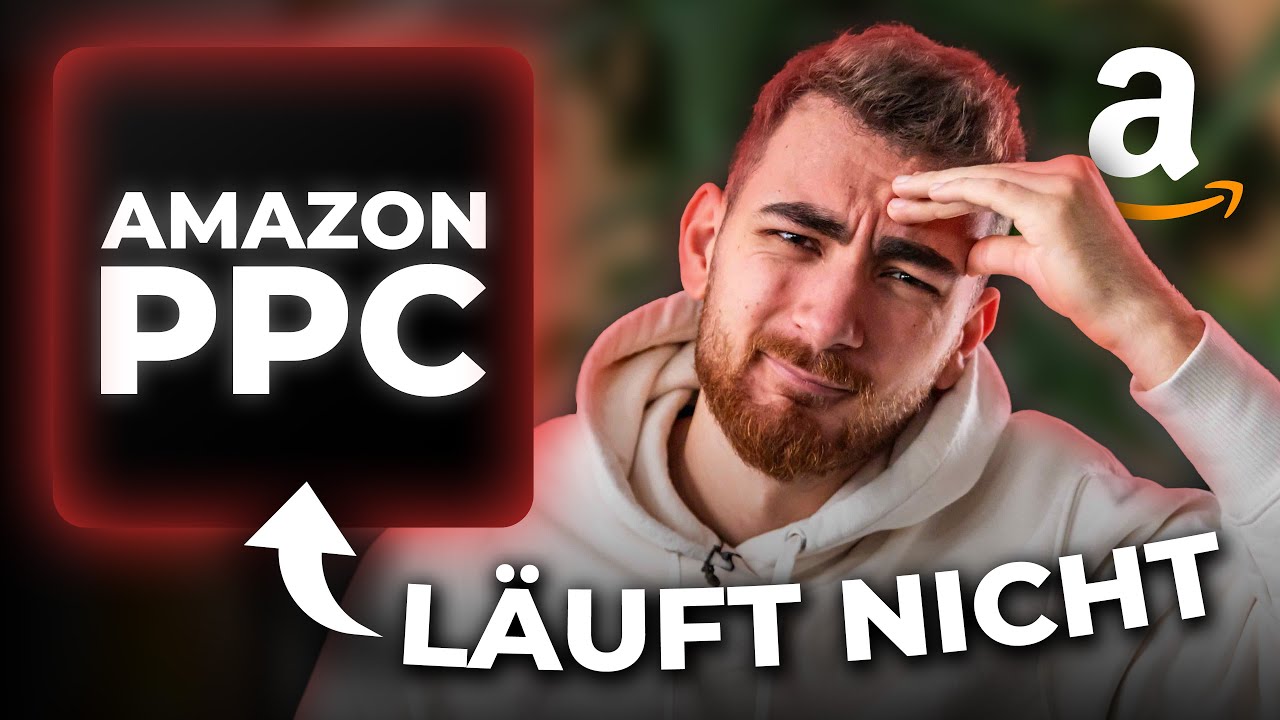
Anyone running ads as an Amazon retailer in 2025 will be familiar with the problem: advertising costs are rising, while sales often fall short of expectations. Many are struggling to finally make their PPC (pay-per-click) campaigns profitable. But is it really always just down to the advertising? The truth is often more complex. In this article, you will find out why PPC on Amazon is often not or only barely profitable and what real levers you can set in motion to change this.
https://www.youtube.com/watch?v=DvAiDYoNdl0
Many retailers believe that the main problem is the PPC strategy. They tweak bids, budget controls and campaign structures, but in the end the result is usually unsatisfactory. Profits are low or close to zero, even if time and money are invested every day.
Amazon PPC often seems like a black hole: a lot is tried, but little works. But the real problem lies deeper. Those who only tweak the ads are taking the second step before the first. Because before PPC can work at all, other fundamentals have to be right.
Good PPC performance includes
PPC is just the amplifier: if the foundation is shaky, any investment in advertising is wasted.
Before a campaign is even launched, your own product is put to the test. Many mistakes are made because retailers rely on PPC too early and overlook blind spots in their product selection. If you sell a product that is not convincing or is simply too expensive, no campaign in the world will conquer the market.
No matter how good the ads are, a "crap product" remains a "crap product". That sounds harsh, but it's a reality.
If you are struggling with several points here, now is the time to be honest. Products that are not convincing should be sold off quickly and replaced with better ones. An anemic campaign for a weak product only burns budget - and often nerves.
PPC is like an amplifier: it makes weaknesses visible! Advertising can never conceal the lack of an attractive offer.
The second biggest problem arises directly before the start of PPC campaigns. Many retailers invest in product photos, but neglect the actual purpose: selling. Not every beautiful image will boost your conversion!
Too many retailers rely on standard images from photographers. But: Most photographers do not know how to present a need, an advantage or a problem in a visible and attractive way. It is therefore not enough to simply upload "good pictures". You have to pick up the customer, address their problem and show them immediately: This product solves your problem best!
If you still see room for improvement in one of these points, this is often the biggest lever before you even start PPC optimization. Improved conversion leads almost immediately to more profitable PPC campaigns: More users who click actually buy!
A typical example from practice: Retailers come to us with poor performance, have their product images and A+ content recreated by Stacvalley, and suddenly PPC works - with an identical advertising budget. The key is better conversion elements, not always more expensive ads!
YouTube videos are great for an initial overview. However, many details that make the difference often don't fit into the format. This is where the PPC Masterplan from Stacvalley comes in. In this training course, you will learn step by step how to become successful with Amazon PPC in 2025, whether you are a beginner or an advanced user.
Do you want sustainable results? Then find out about the PPC Masterplan for Amazon Ads.
Not only the product, but also the targeting of your ads plays a major role in your success. Many retailers overlook fundamental things:
Without impressions there are no clicks, without clicks there are no sales. Reasons for a lack of impressions are often:
Indexing checklist: Where should the important keywords be?
| Position in the listing | Check status |
|---|---|
| Title | Are the main keywords included? |
| Bullet points | Are relevant search terms mentioned? |
| Backend keywords | Have all the important terms been added? |
Correct any imperfections here first before you continue tweaking the bids.
If you start with extremely high click prices, you will quickly lose money. One example:
After just four clicks you are "under water". After that, every click adds directly to your minus.
Instead of starting high right away, many professionals recommend carefully adjusting the bids. Start with lower, preferably odd cent amounts (e.g. 21, 23, 27 cents).
| Bid level | Period | Result |
|---|---|---|
| 23 cents | Day 1-2 | No/hardly any impressions |
| 27 cents | Day 3-4 | First impressions |
| 33 cents | Day 5-6 | Good traffic, visible |
Tip for beginners: Inexperienced retailers often spend too much money right from the start. A step-by-step approach protects your budget!
Many underestimate how important reviews are for PPC campaigns. Customers only develop real trust with around 10 reviews.
Without reviews, every click is more expensive! Wait with larger campaigns until you have a solid rating basis.
Before you invest any more budget in Amazon PPC, check the most important success factors:
Act proactively and implement these levers before you plan further advertising budgets.
With the right basics, you will be profitable again in 2025.
Follow Stacvalley on social media for more tips and updates:
Instagram: @stacvalley.de
Facebook: Stacvalley on Facebook
Do you need individual help with listings, product images or PPC? Contact Stacvalley directly for your project.





Free places for a
collaboration in the XX: